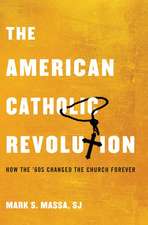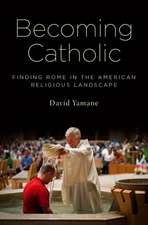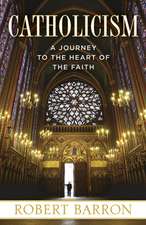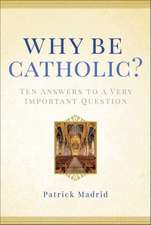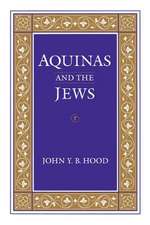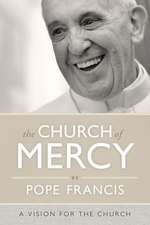The Censor, the Editor, and the Text – The Catholic Church and the Shaping of the Jewish Canon in the Sixteenth Century: Jewish Culture and Contexts
Autor Amnon Raz–krakotzkin, Jackie Feldmanen Limba Engleză Hardback – 5 aug 2007
Din seria Jewish Culture and Contexts
-
 Preț: 448.21 lei
Preț: 448.21 lei -
 Preț: 198.22 lei
Preț: 198.22 lei -
 Preț: 285.64 lei
Preț: 285.64 lei -
 Preț: 192.05 lei
Preț: 192.05 lei -
 Preț: 433.78 lei
Preț: 433.78 lei -
 Preț: 237.53 lei
Preț: 237.53 lei - 11%
 Preț: 480.95 lei
Preț: 480.95 lei -
 Preț: 288.94 lei
Preț: 288.94 lei -
 Preț: 244.38 lei
Preț: 244.38 lei -
 Preț: 295.23 lei
Preț: 295.23 lei -
 Preț: 232.70 lei
Preț: 232.70 lei - 11%
 Preț: 449.87 lei
Preț: 449.87 lei -
 Preț: 337.07 lei
Preț: 337.07 lei - 23%
 Preț: 570.99 lei
Preț: 570.99 lei -
 Preț: 469.00 lei
Preț: 469.00 lei -
 Preț: 372.81 lei
Preț: 372.81 lei -
 Preț: 245.25 lei
Preț: 245.25 lei - 11%
 Preț: 570.69 lei
Preț: 570.69 lei - 11%
 Preț: 478.37 lei
Preț: 478.37 lei -
 Preț: 245.25 lei
Preț: 245.25 lei - 11%
 Preț: 440.19 lei
Preț: 440.19 lei -
 Preț: 467.05 lei
Preț: 467.05 lei - 11%
 Preț: 509.01 lei
Preț: 509.01 lei - 11%
 Preț: 443.59 lei
Preț: 443.59 lei - 11%
 Preț: 445.33 lei
Preț: 445.33 lei -
 Preț: 516.53 lei
Preț: 516.53 lei -
 Preț: 406.30 lei
Preț: 406.30 lei - 11%
 Preț: 503.73 lei
Preț: 503.73 lei - 11%
 Preț: 535.02 lei
Preț: 535.02 lei - 11%
 Preț: 470.68 lei
Preț: 470.68 lei - 11%
 Preț: 447.03 lei
Preț: 447.03 lei - 11%
 Preț: 477.51 lei
Preț: 477.51 lei - 11%
 Preț: 506.29 lei
Preț: 506.29 lei -
 Preț: 435.69 lei
Preț: 435.69 lei -
 Preț: 436.67 lei
Preț: 436.67 lei - 11%
 Preț: 448.73 lei
Preț: 448.73 lei - 11%
 Preț: 444.13 lei
Preț: 444.13 lei -
 Preț: 417.84 lei
Preț: 417.84 lei - 11%
 Preț: 440.19 lei
Preț: 440.19 lei - 11%
 Preț: 505.43 lei
Preț: 505.43 lei - 11%
 Preț: 507.99 lei
Preț: 507.99 lei -
 Preț: 438.95 lei
Preț: 438.95 lei - 11%
 Preț: 469.80 lei
Preț: 469.80 lei - 11%
 Preț: 506.29 lei
Preț: 506.29 lei - 11%
 Preț: 447.90 lei
Preț: 447.90 lei - 11%
 Preț: 441.30 lei
Preț: 441.30 lei - 11%
 Preț: 473.52 lei
Preț: 473.52 lei - 11%
 Preț: 501.97 lei
Preț: 501.97 lei -
 Preț: 339.71 lei
Preț: 339.71 lei
Preț: 502.86 lei
Preț vechi: 565.01 lei
-11% Nou
Puncte Express: 754
Preț estimativ în valută:
96.23€ • 104.50$ • 80.84£
96.23€ • 104.50$ • 80.84£
Carte tipărită la comandă
Livrare economică 22 aprilie-06 mai
Preluare comenzi: 021 569.72.76
Specificații
ISBN-13: 9780812240115
ISBN-10: 0812240111
Pagini: 328
Dimensiuni: 159 x 235 x 29 mm
Greutate: 0.64 kg
Editura: MT – University of Pennsylvania Press
Seria Jewish Culture and Contexts
ISBN-10: 0812240111
Pagini: 328
Dimensiuni: 159 x 235 x 29 mm
Greutate: 0.64 kg
Editura: MT – University of Pennsylvania Press
Seria Jewish Culture and Contexts
Recenzii
"An important book, one that makes us reflect on past conclusions... Raz-Krakotzkin writes history by emphasizing the nuances and inconsistencies intrinsic to cultural change and acculturation, a method that is not to be superciliously dismissed. If readers follow the author's own careful lead, they will be well rewarded."-Association for Jewish Studies Review "In this brilliantly argued book, Amnon Raz-Krakotzkin seeks to explain the role of Catholic censors within two contexts: their place within the church's institutional quest to set boundaries of "permitted knowledge" and to reshape the boundaries of Catholic orthodoxy on the one hand, and their role in reshaping Jewish texts on the other."-Humanities and Social Sciences Online "The history of Jewish publishing and reading practices is often ignored by the scholars working on Western scribal and print cultures. This book can help them to understand the multiple connections that existed between Catholic authorities, Christian printers and publishers, convert editors and censors, and Jewish readers during the sixteenth century. Raz-Krakotzkin stresses the role of censorship not only as a repressive institution but also as an agent in the construction of a repertoire of canonical works and in the collective production of the texts themselves."-Roger Chartier
Notă biografică
Cuprins
Introduction: Censorship and the Transition to Print
Chapter 1. The Burning of the Talmud
Chapter 2. The Institutionalization of the Censorship of Hebrew Literature
Chapter 3. From Polemics to Censorship: The Development of the Expurgation of Written Culture
Chapter 4. Censorship and its Role in the Printing of the Hebrew Book
Chapter 5. From Polemic to Body of Knowledge—Sefer Hazikkuk and the Hebrew Text
Conclusion: Hebraism, Censorship, and Modernization
Notes
Bibliography
Index
Acknowledgments


